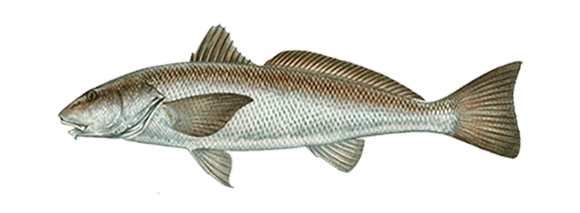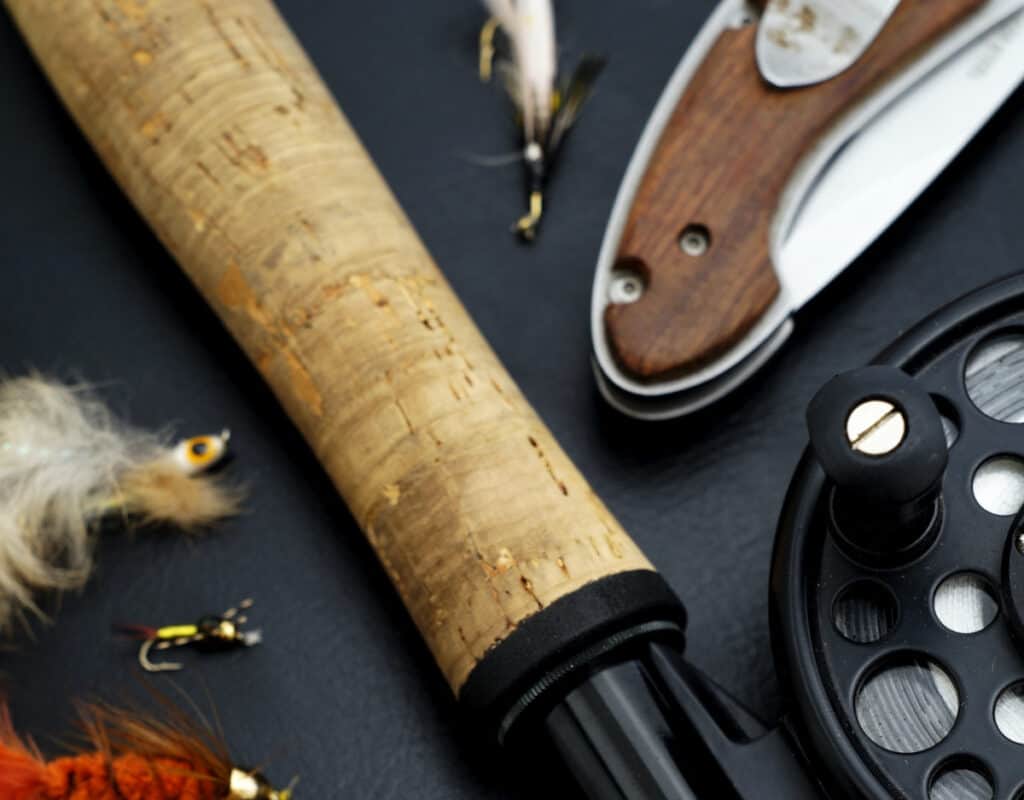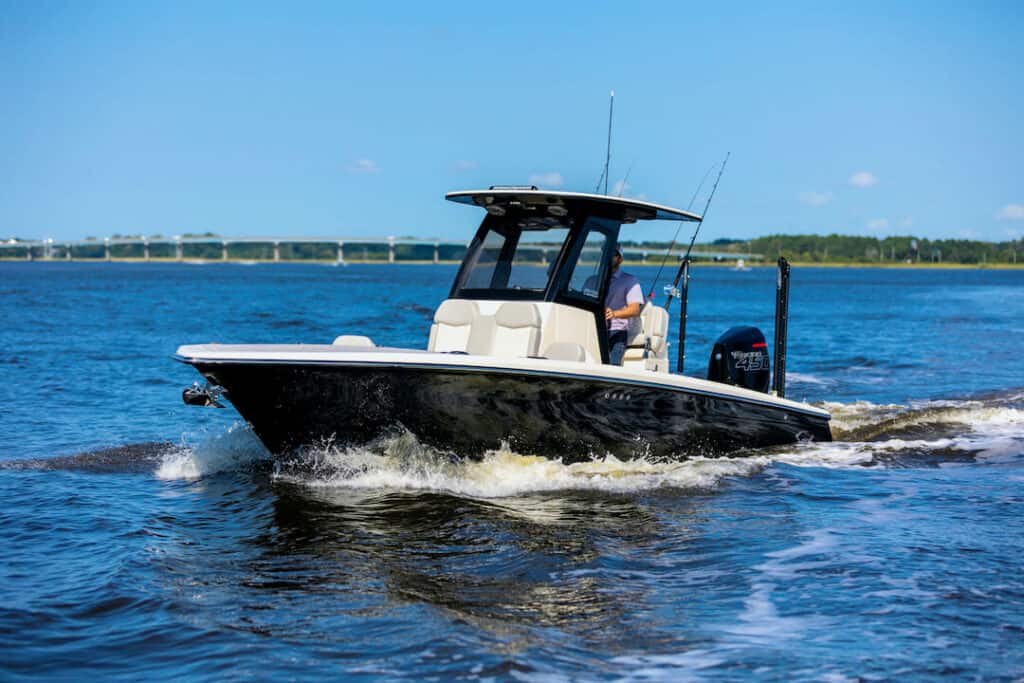
When you think about southern California, there are many things that come to mind. Deserts, tacos, and sprawling urban landscapes jump to the front.
However, one opportunity has flown under the radar of many adventurous fishermen who may find themselves in the warm sunshine of SoCal.
The corbina.
Corbina are a favorite local fish for southern California fly fishermen. Since they are similar in many ways to other croaker sportfish, they are fairly easy to catch and do well on the table. This has led many fly fisherman to dedicate their time on the water to chasing the silver fish for most of their lives.
The real question is, with all the fanfare around bonefish, permit, and snook, how has the corbina gone largely unnoticed for so long? They are far more accessible than some of those species and are not all that different.
Because of this, the aspiring fisherman with an opportunity to fish the California coast has the rare chance to chase a world-class fish without much competition. So let’s find out more about the corbina on a fly.
All About Corbina
If you know your fish, the corbina will look familiar even if you have never seen one before. This is because they are a member of the widely distributed croaker family. A family of fish that includes the ever-popular red drum of the Gulf of Mexico.
Corbina sport a brilliant silver iridescence that captures the eye of any fisherman once they are caught. However, most will only see them as they cruise the shore. This exposes the sea green color of the corbina’s back and allows them to go unnoticed by predators from above.
They feed by inhaling small amounts of sand and then filtering it in their mouths. This allows the corbina to capitalize on the large presence of sand crabs in their home range. While they are primarily bottom feeders, the corbina are visually engaged in California’s clear waters. Given their natural curiosity, this can lead to engaging them visually with sinking flies.
Where to Find Corbina
Corbina are natives of the southern California coast. While they resemble other trophy fly fishing species, corbina exhibit unique behaviors in a fairly narrow band of water. This makes them an incredibly fun destination fish that brings travel anglers to the California coast every year.
On that coast, corbina are almost always caught within the first few feet of surf. They will sometimes venture into deeper waters, but they feed in areas where the crashing waves erode and expose potential meals for them.
This allows anglers to target them by sight. Not only does that make for easier fishing, but it is incredibly exciting. Being able to stalk, see, and cast to a fish allows the angler an outsized opportunity to see the entire process unfold in front of them.
Packing the Tacklebox

Just like any fish, having the right tackle and knowing how to use it is incredibly important. Each component of the corbina angler’s tackle box is important to discuss as it is counterintuitive. You would believe that fishing off the California coast would require heavy tackle, but with corbina it is the exact opposite. With this fish, less is more.
Rods—One of the greatest attributes of fishing for corbina is the ability to use light tackle in catching them. This allows for more intense fights at a much lower cost to the angler. A four-weight rod is more than enough for most fishermen, but some are insistent on using a fast, seven-weight rod for their own reasons. Remembering that corbina are not fast-striking fish when selecting a rod is critical. Therefore casts won’t be long, and strikes will be close. Using a lighter rod will help maximize successful hookups in these conditions.
Reels— Corbina are not a fish of great distances, so large reels loaded for prolonged fights are unnecessary. However, fishing in the surf brings with it the need for reels that are properly prepared for the challenges of saltwater. Selecting an anodized aluminum reel and the ease of properly caring for it is the chief concern with reel selection concerning corbina.
Leaders—Long leaders of light monofilament are crucial for targeting corbina. They are largely visual predators that are looking for easy meals exposed by the crashing waves. Having a long, light leader will allow for the corbina to be focused on the fly and not be disturbed by the leader. 4lbs test monofilament is largely agreed to be the sweet spot between line strength and detection for corbina.
Flies— The SurfinMurkin is a classic corbina fly. The reason is fairly simple, it looks and acts like a sand crab which is the primary food source for the corbina. Selecting a fly with some red and pink will allow you to see the fly and increase the chance of guiding it in front of a feeding corbina. These colors also have the added benefit of catching the eye of a cruising corbina that loves sand crab eggs that are red.
Hooks— Corbina aren’t overly large fish. While there are fly fishermen that will cast large hooks to them, they are the minority by far. The best-sized hook for a corbina is a number 4, and the flies selected should be about that size. Anything larger will result in missed hooksets or disinterested corbina.
Tips for Catching Corbina on a Fly
Sand Crab Imitators– The SurfinMurkin is the go-to fly for corbina. However, others will do the job as well. The main thing is that you need to imitate the corbina’s primary food source, the sand crab. Sand crab eggs are often reddish, whereas the body of a sand crab is gray. Any fly that combines these two colors with a bias for grey will successfully land a corbina.
Fish the Summer– Corbina can be caught year-round by simply walking sandy beaches and casting to them when they are spotted. However, they spawn from June through September and will be much more aggressive and easier to find during those months. So along with it being a much warmer time to wade in the Pacific Ocean, you are more likely to hook up with a corbina during those months.
Be Patient– Corbina aren’t fast on the strike. They are well known for following flies for an extended time so, the length of your cast should afford them enough time to decide they want to bite. Therefore, the best thing you can do is to be patient, no matter how close they choose to get. Many will strike at distances that are measured within feet rather than yards.
Catching Corbina with Scout Boats

One of the best features of corbina is the ease of accessibility the fish offers. Many pursue corbina by simply walking to their local beach and casting into the surf. However, there are times when the best corbina fishing is on isolated islands, inlets, and other inaccessible areas. That’s where the Scout 281 XSS comes in. With the right hull and power to brave the California coast without drafting too much, you will be able to access prime corbina feeding and spawning locations far from the competition.

